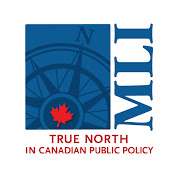LTE-Advanced comprises a set of features, while one of the most demanded feature is carrier aggregation (CA). LTE-Advanced allows the aggregation of at a maximum five component carriers up to 20 MHz of bandwidth to attain a total transmission bandwidth of up to 100 MHz. As none of the service providers owns continuous spectrum of 100 MHz three different modes of carrier aggregation exist: intra-band contiguous and non-contiguous as well as inter-band carrier aggregation. 3GPP’s RAN Working Group 4 (RAN4), responsible for setting performance requirements, initially limits the aggregation to two component carriers only.
The signaling towards an end user device for carrier aggregation affects only certain layers, not the entire protocol stack. For instance, the device is permanently connected via its PCC to the serving Primary Cell (PCell). Non-Access Stratum (NAS) functionality such as security key exchange and mobility information are provided by the PCell. All secondary component carriers …










![Vistra, Constellation Energy Stocks Rise Further on AI Energy Needs [Video]](https://marketingprohub.com/wp-content/uploads/2025/01/mp_816019_0_GettyImages21781592550ac749cf68804a2ea2bc49f2f35c81e0jpg.jpg)
![Video: January 11th Bernews Morning Newsflash [Video]](https://marketingprohub.com/wp-content/uploads/2025/01/mp_825614_0_MNFIGcopy6jpg.jpg)
![Driverless taxi rider calls for help after getting stuck in car | US News [Video]](https://marketingprohub.com/wp-content/uploads/2025/01/mp_818895_0_posterjpg.jpg)
![Amit Yoran, cybersecurity executive and entrepreneur, has died at 54 | Money [Video]](https://marketingprohub.com/wp-content/uploads/2025/01/mp_817638_0_38113d50603e11eda31ef38c773c2bbajpg.jpg)
